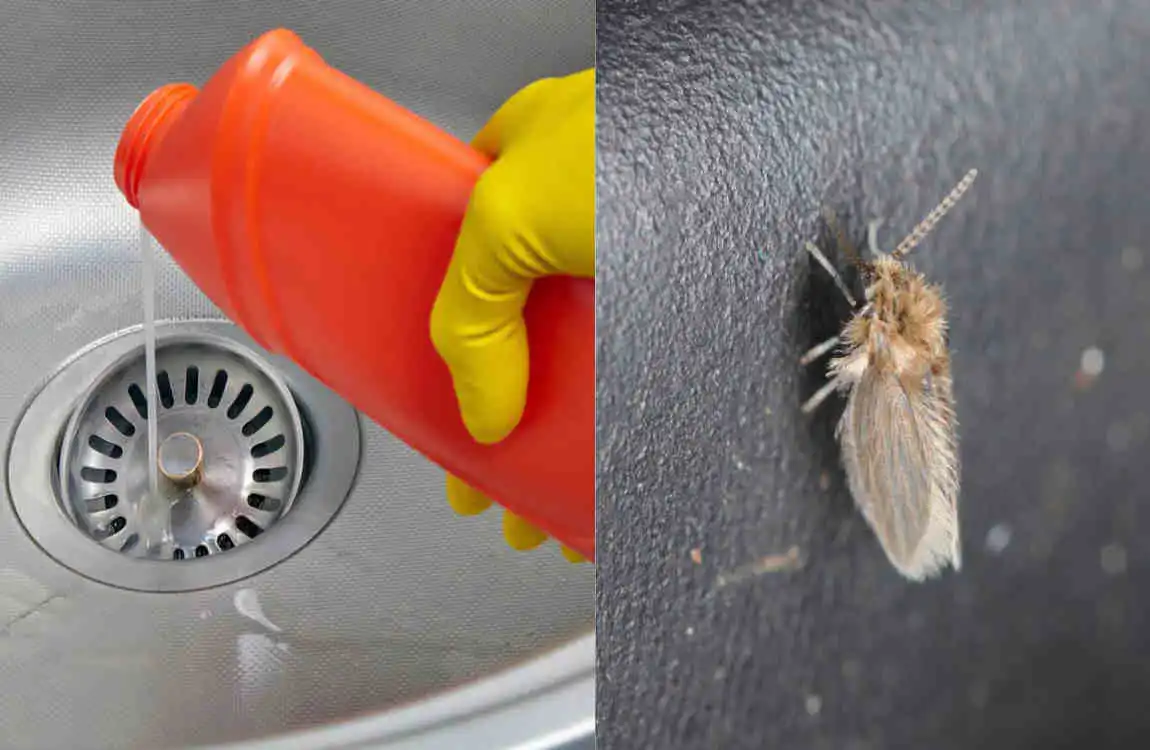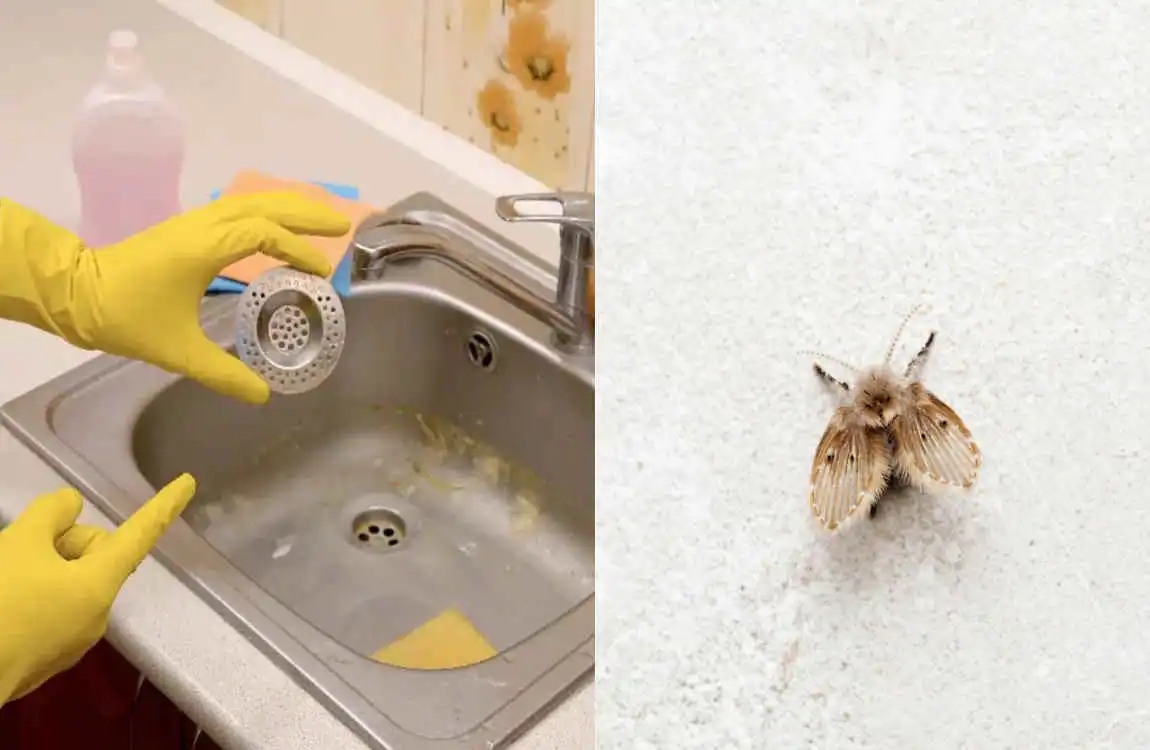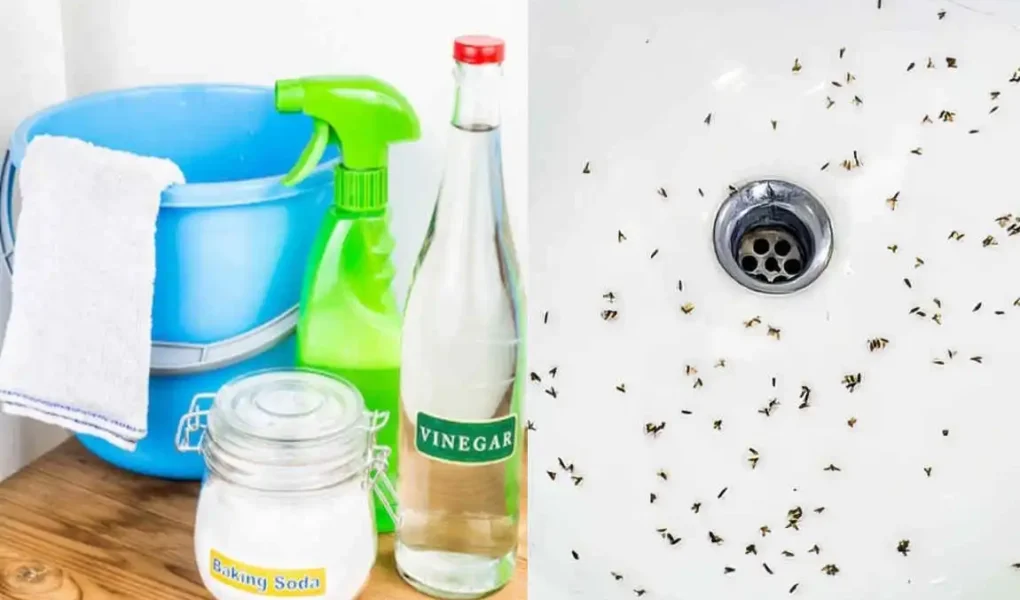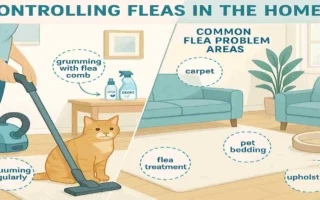Drain flies, also known as sink flies or moth flies, are a common household nuisance that can quickly disrupt your peace. These tiny, pesky creatures thrive in moist environments, especially around drains, sinks, and bathrooms. If you’re wondering, “How to get rid of drain flies in my house?”, you’ve come to the right place. In this detailed guide, we’ll walk you through everything you need to know about eliminating drain flies fast and effectively.
What Are Drain Flies?

Before diving into solutions, it’s essential to understand what drain flies are and why they choose to inhabit your home.
Description and Characteristics
Drain flies are small, fuzzy, moth-like insects measuring about 1/8-inch long. Their bodies and wings are covered with hair, giving them a fuzzy appearance. They are often mistaken for gnats or fruit flies, but their slow, fluttering flight pattern is a key way to distinguish them.
Common Habitats
Drain flies breed and thrive in areas with standing water, organic debris, and moisture. Common locations where you’ll find them in your home include:
- Kitchen and bathroom sink drains
- Shower and bathtub drains
- Floor drains in basements or laundry rooms
- Garbage disposals
- Overflow pipes in sinks or tubs
Why Do Drain Flies Appear?
Drain flies are attracted to organic matter buildup in drains, such as grease, soap scum, and food particles. These materials create the perfect breeding ground for their larvae. If you’ve started noticing them, likely, they’ve already laid eggs in your drains.
Signs You Have Drain Flies in Your House
Are you unsure if those tiny bugs are drain flies? Here’s how to confirm their presence:
Identifying Drain Flies
Drain flies are often mistaken for other small insects, such as fruit flies or gnats. However, they have a distinctive fuzzy appearance and tend to hover near drains or wet areas. Unlike fruit flies, they aren’t attracted to fresh produce.
Common Signs of Drain Flies
Here are the most obvious signs that you have a drain fly problem:
- Flying Insects: Small, dark-colored flies hovering around sinks, drains, or damp places.
- Slow Drains: Accumulated organic matter that clogs drains also provides a breeding ground for drain flies.
- Foul Odors: A musty or sewage-like smell from your drains can indicate organic buildup, which attracts drain flies.
Confirming the Source
To confirm the source of the infestation, cover the suspected drain with sticky tape overnight. If you find flies stuck to the tape the next morning, you’ve identified the breeding site.
Why It Is Important to Eliminate Drain Flies Quickly

Drain flies may seem harmless, but ignoring them can lead to bigger problems. Here’s why you should act fast:
Health and Hygiene Concerns
Drain flies feed and breed in decaying organic matter, making them carriers of bacteria and allergens. Their presence can compromise the hygiene of your home.
Prevention of Infestation Growth
Drain flies reproduce quickly. A single female can lay up to 300 eggs at a time. If left unchecked, this can lead to a full-blown infestation in just a few days.
Impact on Comfort and Reputation
Nobody wants to entertain guests or clients with flies buzzing around. In hospitality-related businesses, a drain fly infestation can harm your reputation.
Step-by-Step Guide: How to Get Rid of Drain Flies in My House
Now that you understand the problem, let’s dive into practical solutions. Follow these steps to eliminate drain flies effectively.
Identify and Eliminate Breeding Sites
The first step is to locate all potential breeding grounds.
- Inspect Drains: Examine sink, shower, and floor drains with a flashlight to spot buildup.
- Use Sticky Tape: As mentioned earlier, cover the suspected drain with sticky tape overnight to confirm the source.
- Clean Out Organic Buildup: Remove any visible debris or biofilm, as this is where eggs and larvae thrive.
Clean Drains Thoroughly
Thorough drain cleaning is essential to eliminate the breeding environment.
Manual Cleaning
Use a drain brush to scrub the insides of your pipes and remove biofilm. Follow this by flushing the drain with boiling water to kill any remaining larvae.
Baking Soda and Vinegar Solution
A natural and effective cleaning method involves:
- Pour half a cup of baking soda into the drain.
- Adding half a cup of vinegar.
- Allow the mixture to fizz for 15-20 minutes before flushing with hot water.
Enzyme-Based Cleaners
Enzyme-based drain cleaners break down organic matter without harsh chemicals. These are a safer option for homes with pets or children.
Product Type Pros Cons
Baking Soda & Vinegar Natural, affordable, may require repeated use
Enzyme Cleaners are Safe and effective for buildup. They are Slower than chemical cleaners
Chemical Cleaners : Fast-acting, potent, Toxic, not eco-friendly
Use Traps to Catch Adult Drain Flies
While cleaning drains targets larvae, traps will help control the adult population.
DIY Traps
- Apple Cider Vinegar Trap: Fill a bowl with apple cider vinegar and cover it with plastic wrap. Poke small holes in the wrap to trap the flies.
- Sugar and Yeast Trap: Mix sugar, water, and yeast in a container. The fermentation attracts and traps flies.
Store-Bought Options
Sticky fly traps or UV light traps are practical and easy to use. Place them near drains or other high-activity areas.
Maintain Dryness and Remove Moisture
Drain flies thrive in moist environments, so controlling moisture is key.
- Fix Leaks: Repair any leaking pipes or faucets.
- Ventilation: Ensure proper ventilation in bathrooms and kitchens to reduce humidity.
- Dehumidifiers: Use a dehumidifier in damp areas like basements.
Prevent Reinfestation with Regular Maintenance
To ensure the flies don’t come back, adopt a regular maintenance routine.
- Clean Drains Regularly: Use a drain cleaner or a natural solution weekly.
- Inspect for Buildup: Check drains monthly for organic debris.
- Seal Cracks: Close any gaps around plumbing fixtures to prevent flies from entering.
Natural Remedies and Home Treatments

If you prefer eco-friendly methods, here are some natural solutions:
Essential Oils
Oils like peppermint, eucalyptus, and lavender repel drain flies. Add a few drops to a spray bottle with water and spray around drains and damp areas.
Homemade Spray Recipe
Mix equal parts vinegar and water, along with a few drops of essential oil. Spray this directly on flies or around breeding areas.
Caution
While natural remedies are safe, they may not work as quickly as chemical treatments. Always combine them with thorough drain cleaning for the best results.
When to Call a Professional Pest Control Service
Sometimes, DIY methods aren’t enough. Here’s when to call in the experts:
- Severe Infestations: If the flies persist despite your efforts, professional help may be necessary.
- Unreachable Breeding Sites: Pest control services have tools to treat hard-to-reach areas.
- Health Risks: If the infestation poses a risk to your family’s health, don’t hesitate to get help.
What to Expect
Professional treatments may include drain cleaning, chemical applications, or fogging. Costs can vary but typically range from $100 to $300, depending on the severity of the infestation.
Frequently Asked Questions (FAQs)
How long does it take to get rid of drain flies completely?
With consistent cleaning and trapping, most infestations can be cleared within a week.
Can drain flies cause any diseases?
While they don’t bite, drain flies can carry bacteria from decaying organic matter, posing a hygiene risk.
Are drain flies dangerous to pets?
Drain flies are harmless to pets but may irritate them if they swarm in large numbers.
Is it safe to use chemical drain cleaners around children and pets?
Chemical cleaners can be toxic. Always follow safety instructions, and consider natural or enzyme-based alternatives.




